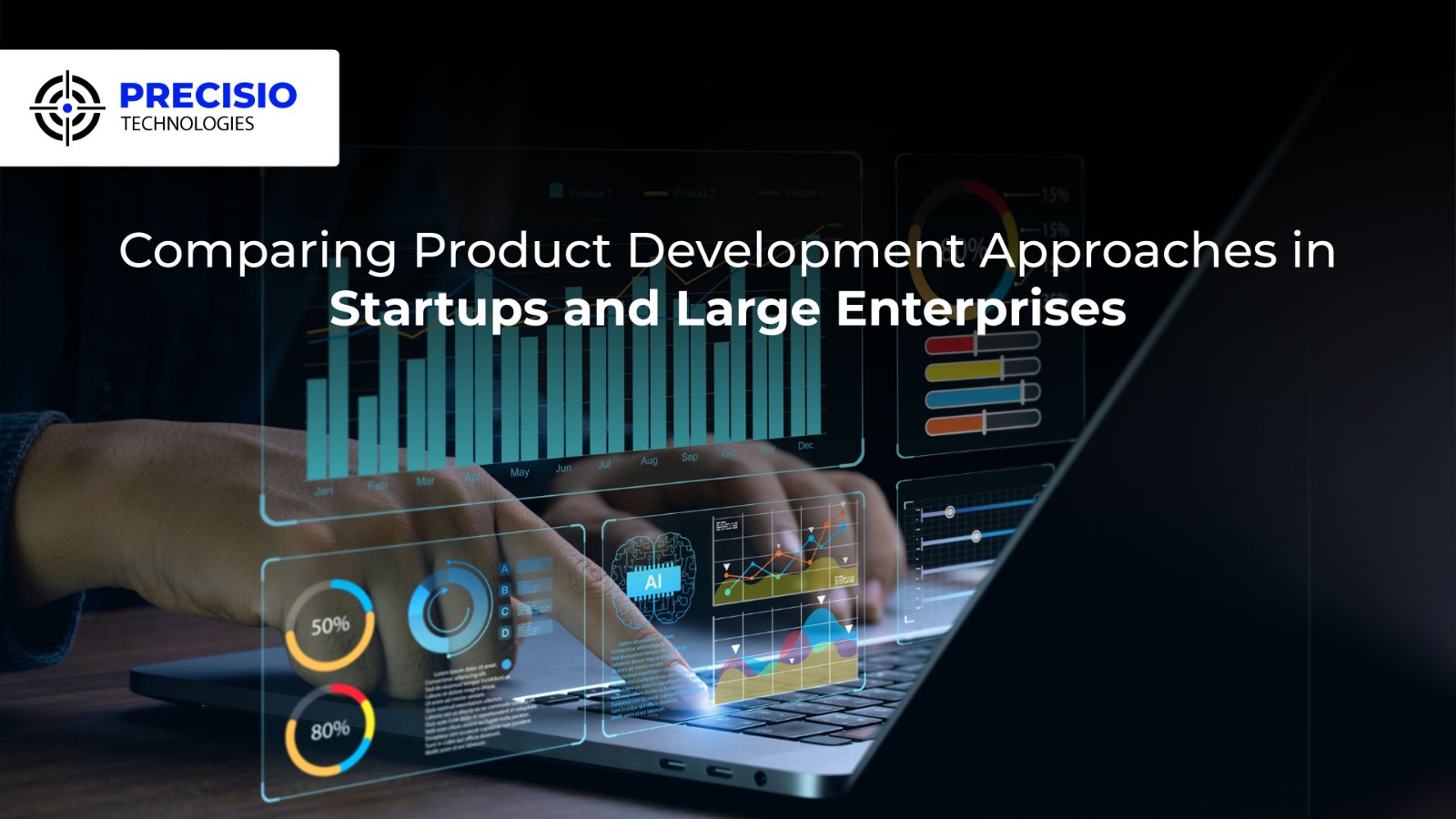
Product development is at the heart of innovation, bringing new products and services to market and determining a company’s success. However, approaches to product development can differ significantly between startups and large companies. Startups often focus on agility and rapid interaction, while large companies tend to focus on structure and scalability. Understanding these differences — and how they impact the development process — is key to finding the best strategy for your business. This blog looks at the unique approaches of startups and large companies, examining their strengths and weaknesses, and what the future holds for product development in 2025.
Understanding the mindset of start-ups
Startups thrive on agility and innovation and often work with limited resources and small teams. The most important characteristics of startups include
- Speed and flexibility: Startups are known for their ability to react quickly in response to market feedback.
- Lean Methodologies: Many startups work according to lean startup principles, and focus on developing a Minimum Viable Product (MVP) and interacting based on customer feedback.
- Customer-centric approach: Startups place great emphasis on validating and involving customers to guide product development.
- Willingness to take risks: Startups are often willing to take risks and experiment with unconventional ideas.
Due to their smaller size and less rigid structures, start-up startups can often act faster and adapt to changing market conditions. However, this flexibility also brings challenges, such as limited resources and uncertainty.
Understanding the corporate approach
Large companies, on the other hand, operate on a larger scale and usually have more established processes. Characteristics of the enterprise approach include:
- Structure and stability: companies often have formalized product development processes and organizational hierarchies.
- Resource-rich environment: Companies usually have larger budgets that allow them to invest in extensive research and development.
- Cross-functional collaboration: Several teams are involved in product development in companies, which requires coordination and agreement.
- Risk minimization and compliance: Companies focus on minimizing risk, ensuring regulatory compliance, and maintaining product quality.
The structured approach of companies brings stability and scalability, but can also slow down the development process. The many approval procedures and bureaucratic processes can limit agility and flexibility.
Main differences in product development
The main differences between startups and corporates arise from their organizational culture and the availability of resources:
- Decision-making process: Startups tend to have a decentralized decision-making process that enables faster reactions, while companies tend to have hierarchical structures with multiple approval levels.
- Development cycles: Startups tend to work with shorter development cycles, while corporates may take longer due to formalized processes and compliance requirements.
- Innovation vs. risk management: Startups focus on innovation and are more willing to take risks, while corporates focus on risk management and scalability.
Despite these differences, both startups and corporates can learn from each other. Corporations can benefit from the agility and innovation of startups, while startups can learn from the structured processes and resource management in large companies.
Advantages and challenges of each approach
Both startups and companies have different advantages and challenges in their product development approaches:
Startup advantages:
- Speed and agility in responding to market changes.
- The ability to test and validate product ideas quickly.
- Flexibility to adapt to customer feedback.
Startup challenges:
- Limited resources and budget constraints.
- Higher risk and uncertainty.
- Difficulty scaling products for larger markets.
Benefits for companies:
- Rich resources and expertise.
- Scalability and established brand recognition.
- Robust risk management and compliance processes.
Challenges for companies:
- Slower development cycles due to bureaucratic processes.
- Difficulties in fostering innovation and creativity.
- Resistance to change and adaptability.
Understanding these benefits and challenges can help companies tailor their product development strategies to their individual needs and goals.
Best practices for product development:
Both startups and large companies can apply best practices to improve their product development processes. Here are some recommendations for each approach:
Best practices for startups:
- Embrace lean methodologies: Focus on building MVPs and iterating based on customer feedback.
- Encourage cross-functional collaboration: Foster a culture of collaboration and open communication.
- Invest in customer research: Prioritize understanding customer needs and preferences.
Best practices for organizations:
- Promote a culture of innovation: Encourage experimentation and provide resources for innovative projects.
- Streamline processes: Reduce bureaucratic hurdles to improve agility.
- Use data analytics: Use data to make product decisions and drive development.
The future of product development in 2025
Looking ahead to 2025, product development will evolve with technology and changing market dynamics. Several trends are likely to shape the future of product development:
- Artificial intelligence and automation: artificial intelligence and automation will play an increasingly important role in product development, streamlining processes and driving innovation.
- Remote collaboration: The trend towards remote working will require new tools and practices for effective collaboration.
- Sustainability and social responsibility: Consumers are increasingly demanding sustainable and socially responsible products, forcing companies to incorporate these values into their development processes.
- Personalization and individualization: Product development will focus on creating personalized experiences for customers, driven by data and advanced analytics.
Conclusion
Product development is a complex and dynamic process with different approaches in startups and large companies. While startups are characterized by agility and innovation, enterprises offer stability and scalability. By understanding these differences and applying best practices, companies can navigate the product development landscape and stay ahead of the competition. As we move into 2025, companies must focus on technology, collaboration, and sustainability to succeed in product development.
Discover the precision of product development with Precisio Technologies
If you’re looking for a partner who understands the intricacies of product development, Precisio Technologies is here for you. With our experience in startup agility and enterprise scalability, we can take your product development from concept to launch. Let us help you turn your ideas into reality with precision, innovation, and expertise.
